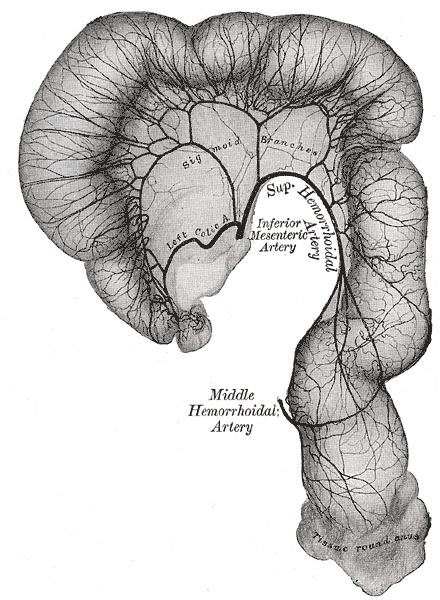Precursor vitelline arteries MeSH A07.231.114.565.510 | ||
 | ||
Latin arteria mesenterica inferior | ||
In human anatomy, the inferior mesenteric artery, often abbreviated as IMA, is the third main branch of the abdominal aorta and arises at the level of L3, supplying the large intestine from the left colic (or splenic) flexure to the upper part of the rectum, which includes the descending colon, the sigmoid colon, and part of the rectum. Proximally, its territory of distribution overlaps (forms a watershed) with the middle colic artery, and therefore the superior mesenteric artery. The SMA and IMA anastomose via the marginal artery of the colon (artery of Drummond) and via Riolan's arcade (also called the "meandering artery", an arterial connection between the left colic artery and the medial colic artery). The territory of distribution of the IMA is more or less equivalent to the embryonic hindgut.
Contents
Branching
The IMA branches off the anterior surface of the abdominal aorta below the renal artery branch points, and approximately midway between these and the aortic bifurcation (into the common iliac arteries), L3 vertebral level.
The IMA has the following branches:
All these arterial branches further divide into arcades which then supply the colon at regular intervals.
Associated veins
The IMA is accompanied along its course by a similarly named vein, the inferior mesenteric vein, which drains into the splenic vein.
The IMV therefore drains to the portal vein and does not fully mirror the course of the IMA.
Surgery and pathology
The IMA and/or its branches must be resected for a left hemicolectomy.
A horseshoe kidney, a common (1 in 500) anomaly of the kidneys, will be positioned below the IMA.
